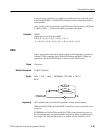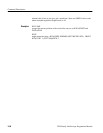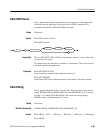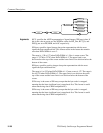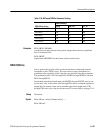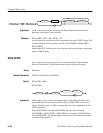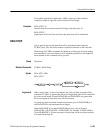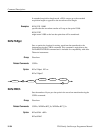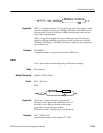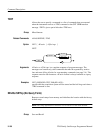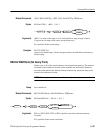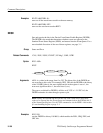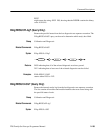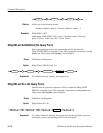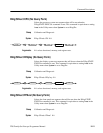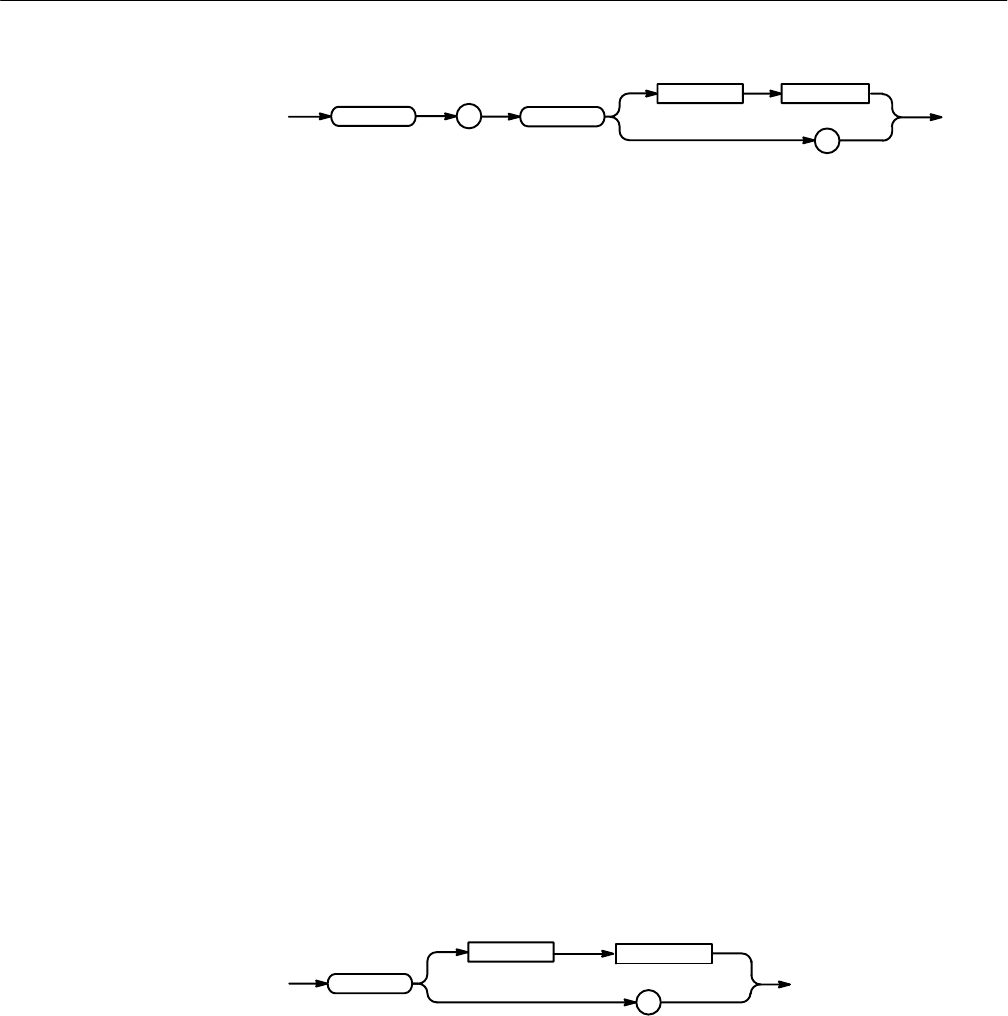
Command Descriptions
TDS Family Oscilloscope Programmer Manual
2–105
DATa
:
WIDth
?
<Space> <NR1>
<NR1> = 1 specifies that there is 1 byte (8 bits) per point. This format is useful
when the acquisition mode is set to SAMple, ENVelope, or PEAKdetect (one
byte per point). If used for AVErage or HIRes (two bytes per point), the low
order byte is not transmitted.
<NR1> = 2 specifies that there are 2 bytes (16 bits) per point. This format is
useful for AVErage and HIRes (two bytes per point) waveforms. If used for
ENVelope, PEAKdetect, or SAMple (one byte per point), the least significant
byte is always zero.
DATA:WIDth 1
sets the data width to 1 byte per data point for CURVe data.
DATE
Sets or queries the date that the digitizing oscilloscope can display.
Miscellaneous
DISplay: CLOCk, TIMe
DATE <QString>
DATE?
<QString>
DATE
<Space>
?
<QString> is a date in the form yyyy-mm-dd".
mm refers to a two-digit month number from 01 to 12.
dd refers to a two-digit day number in the month.
yyyy refers to a four-digit year number.
There must a dash (–) after the yyyy and after the mm.
DATE "1993-01-24"
specifies that the date is set to January 24
th
, 1993.
Arguments
Examples
Group
Related Commands
Syntax
Arguments
Examples



